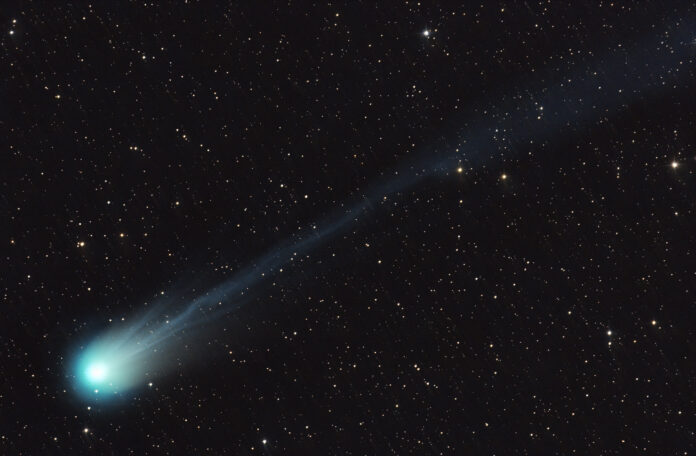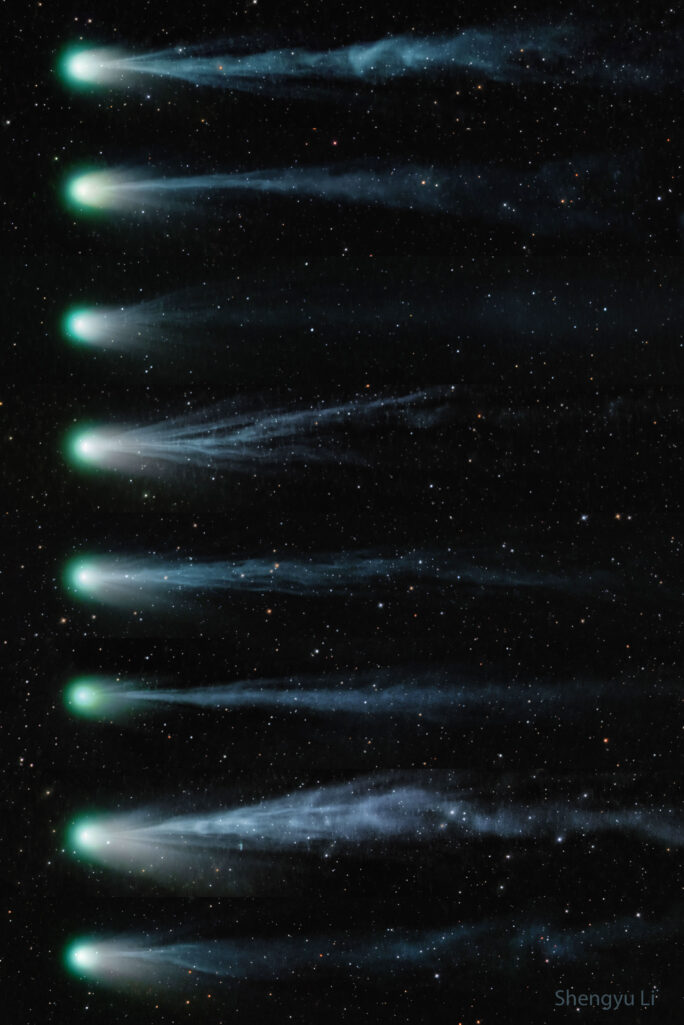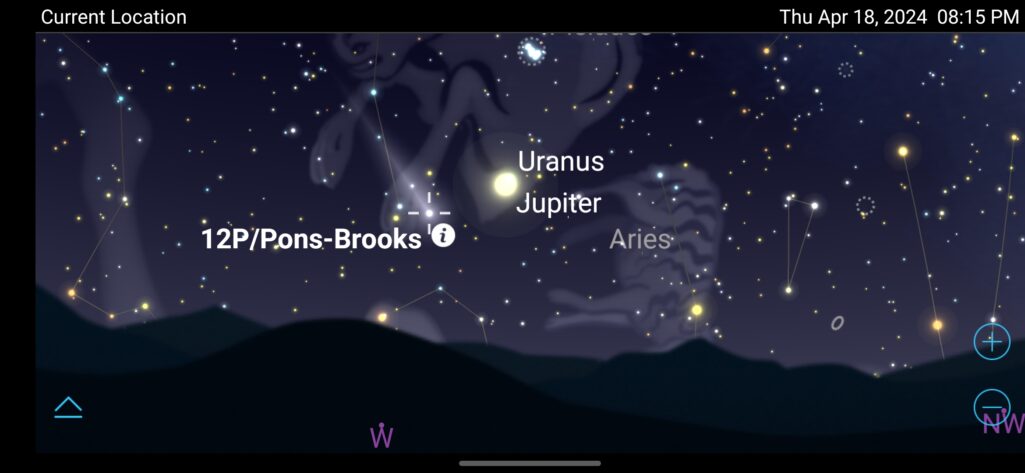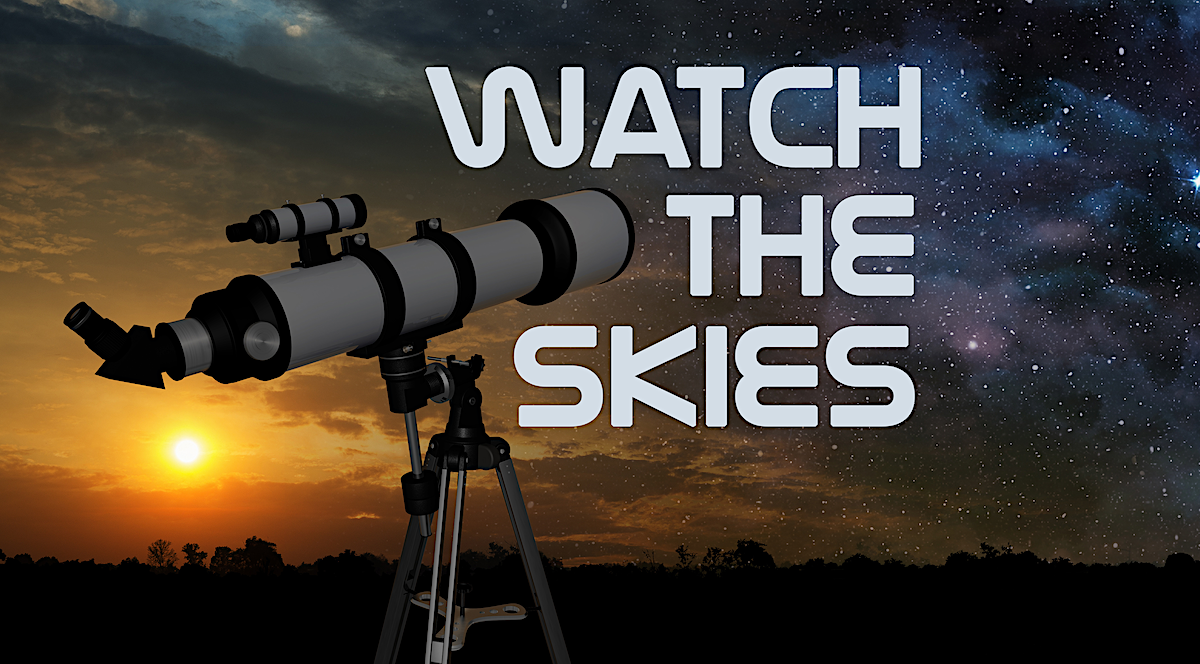
Comet 12P/Pons-Brooks is nearing its closest approach to the sun and will soon begin its long journey back out into space, but you’ve still got a short window to see it.
Pons-Brooks was likely first discovered way back in 1385 by ancient Chinese astronomer Ming Shilu. It was then seen again in 1457. After that, there would be no mention of this periodic comet until 1812, when a pair of European astronomers discovered it within a couple of weeks of one another. The first was Jean-Louis Pons, who discovered it on July 12, 1812, and has his name attached to it. The “Brooks” part of the name gives credit to astronomer William Robert Brooks, who accidentally re-discovered it on its next orbit in August of 1884.
The comet is one of the brighter periodic comets and consistently reaches just barely into naked eye brightness at around +4-5 magnitude. However, this comet has been observed to have outbursts regularly, which can cause it to surge in brightness. The most recent occurred on April 3rd.

Image Credit & Copyright: Shengyu Li & Shaining
These outbursts, along with numerous other things, including solar wind and the rotation rate of the comet, can cause the comet’s tail to look different every day. The image here shared by NASA on their Astronomy Picture of the Day (APOD) page showcases these changes.
Per www.aerith.net, the latest visual magnitude of the comet is around +4.1 magnitude. In a dark sky this would be easy to see, but the comet is currently located low in the sky, which makes it a more challenging target.
Unfortunately, 12P will get lower and lower in the sky as it makes its closest approach to Earth. That means the window to see this comet is quickly closing as it gets to its brightest state.
Fortunately, it is currently located near the bright planet Jupiter in the evening sky, which will help us find it with a pair of good binoculars or a small telescope.
Thanks to the relatively bright background sky, don’t expect to see anything spectacular, but head outside around an hour after sunset (around 9 p.m.) and point your binoculars or small telescope just down and left of Jupiter.
If you are lucky, you will see a cute little green fuzzball and maybe a little bit of a tail pointing up and away from the sun.

The next time we will see this comet again will be in 2095, so now is your chance to catch a glimpse!






